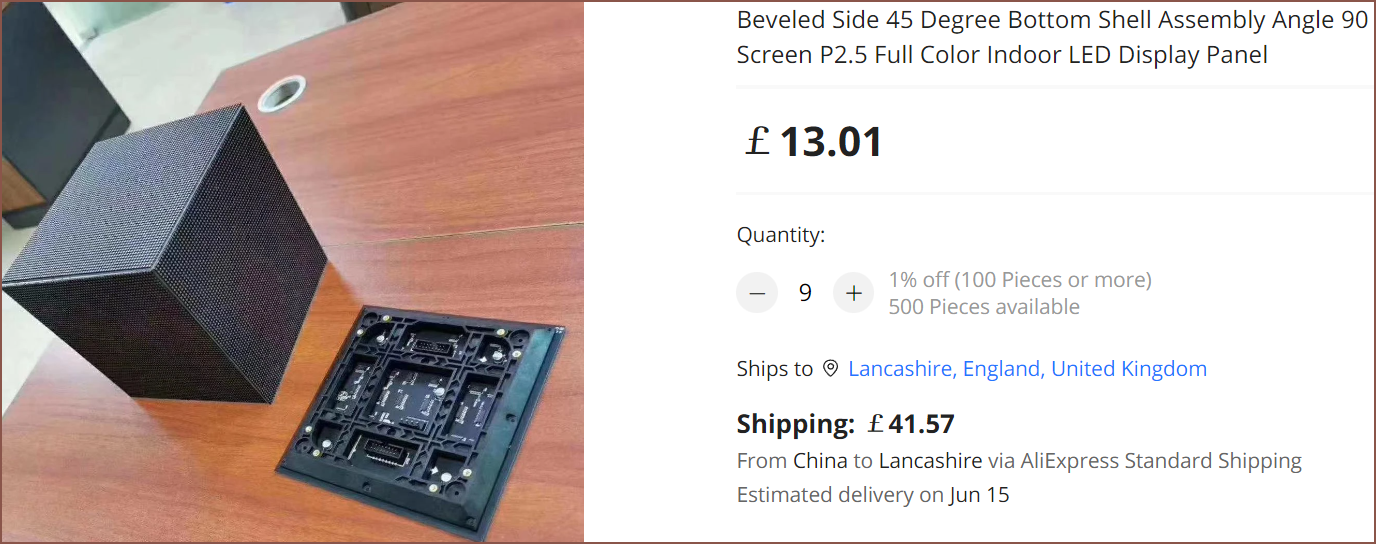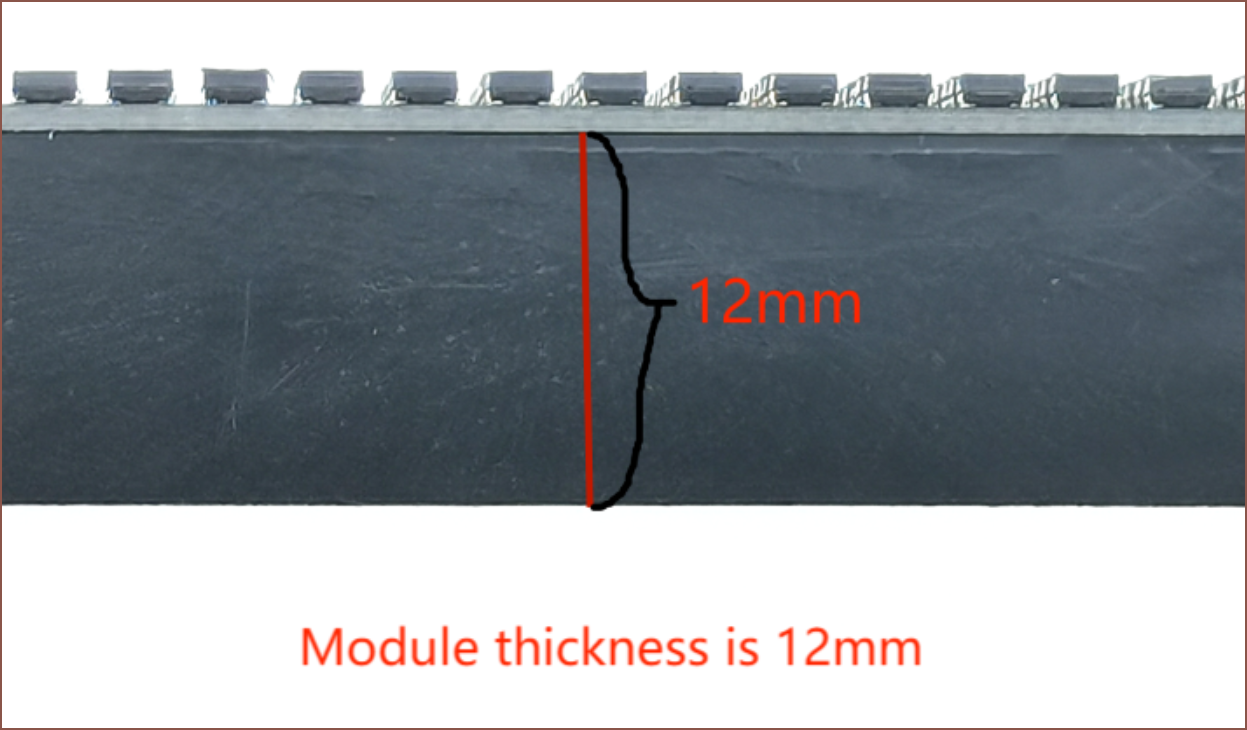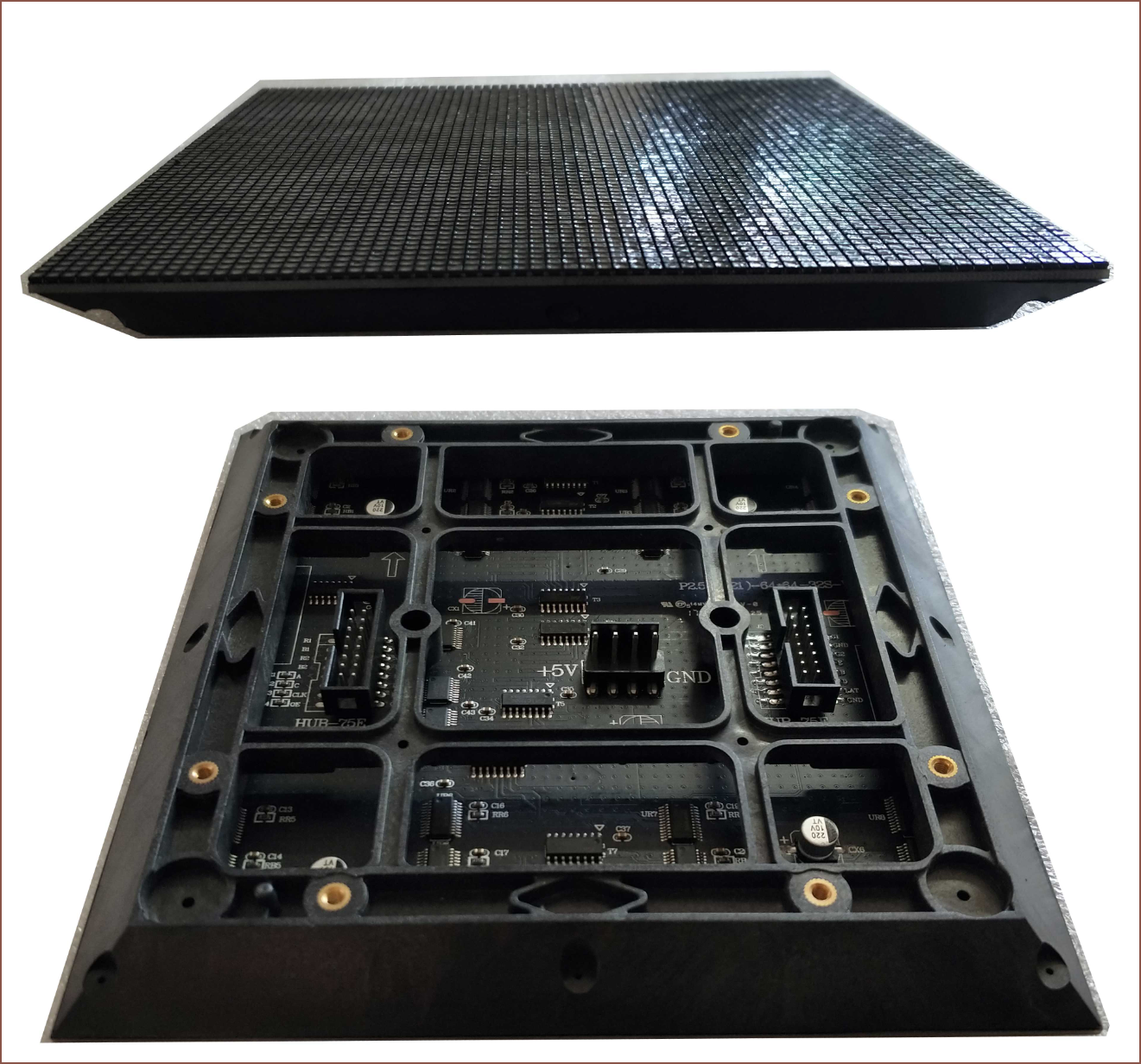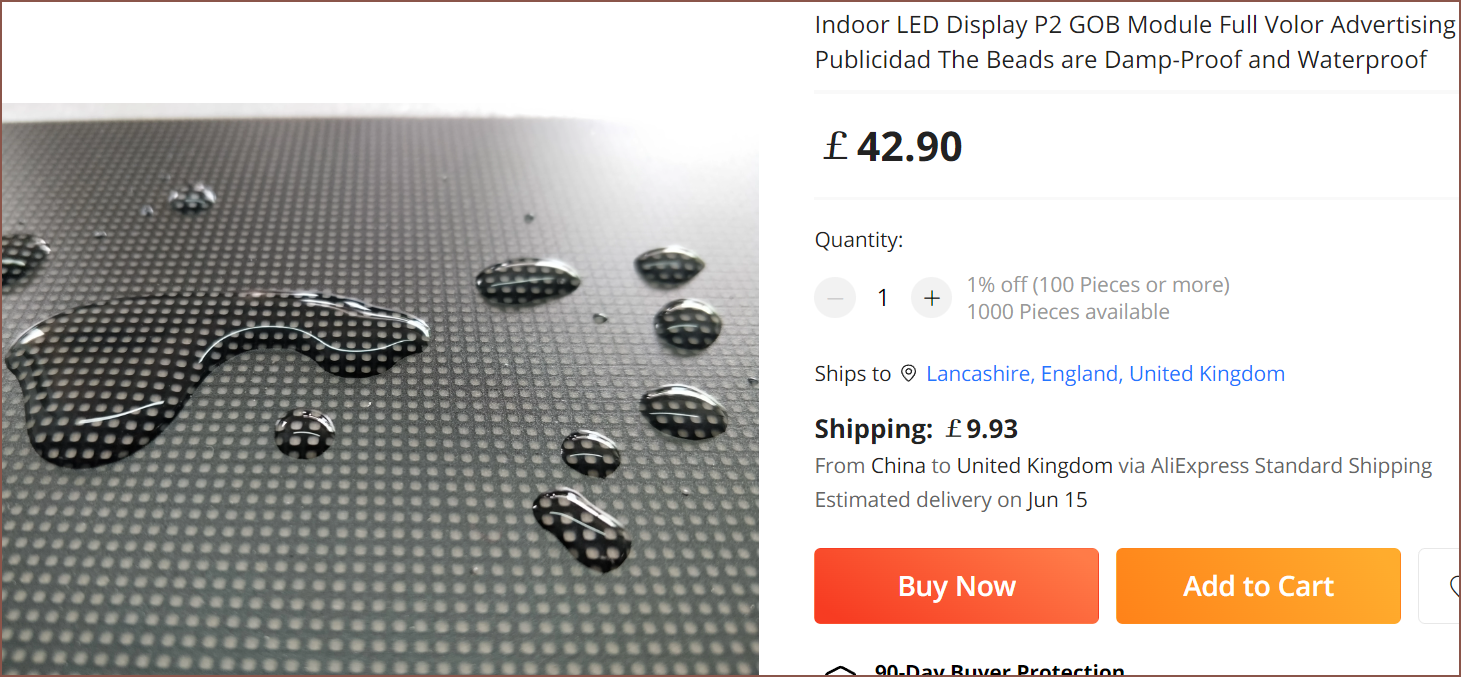So, while I was on my DIY Miini-LED backlight research, I came across this relatively unique panel:

Traditionally, the panels have a rather chunky injection moulded frame:

On the contraty, these ones are thin in the corners, where it matters for this application:

I've also been worried that 256mm square panels are still a tad too large for being able to integrate the Tiles into a domestic setting. These 160mm panels mean that the Tiles will cover less area per each, but it also means that they need less space to operate and look sharper, since the same 64x64px display is compressed into a smaller area.
What would've made this even better is if the panel had the GOB (Glue On Board) coating found in another one of the seller's listings, which would prevent splashes and light knocks from damaging the panels:

Way back in 2020, I was wondering if it was possible to coat the panels with epoxy to obtain a flat top surface, because I wanted the T^2 Tiles to be able to actually hold light shelvable objects (and because thousands of tiny SMD components exposed to the elements of the home sounded damage-prone). Now I know it indeed is, though I'm still not sure if I'd have the skill to do it myself. There is this repair video I found (see below), so it's possible to touch it up on a small scale, but I wonder how hard it is to get uniform thickness and flush edges for doing the whole board.:
[26 May: Edit 1] Good news. I asked if I could get 10pcs of the bevelled LED modules with GOB applied, and the HONGHUI LED Display Store seller said it could be done if an additional 14 days processing time was acceptable. Obviously, that's fine and LED modules that move around could really use the additional durability. The height of the module would be 18mm. Now I just need to know about cost...
I'm also wondering how many Tiles is a low amount but still high enough to consider this project a success. I'm thinking 9 Tiles for a 3 x 3 installation (or 1 x 9 floor-to-ceiling strip). It's also the same amount you get in Nanoleaf "starter kits". Coincidentally, the "Canvas" tiles they make are 150x150mm large, so it further looks like a 160mm square T^2 Tile that can arbitrarily connect to other tiles is recommendable.
 kelvinA
kelvinA
Discussions
Become a Hackaday.io Member
Create an account to leave a comment. Already have an account? Log In.